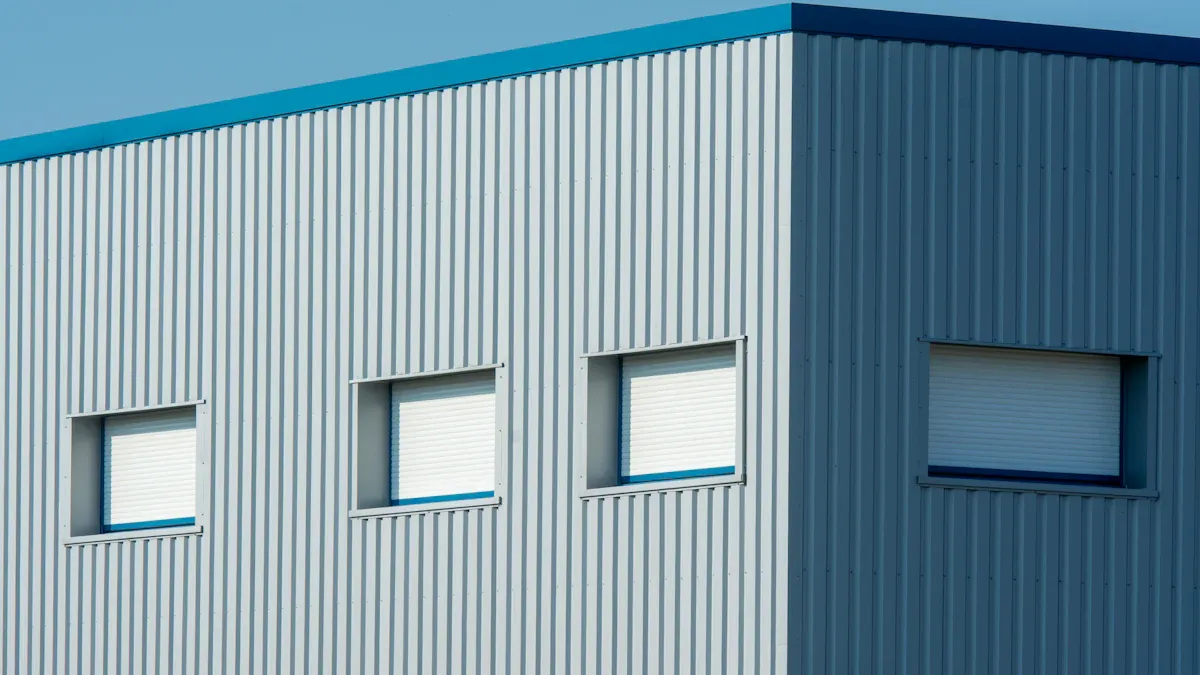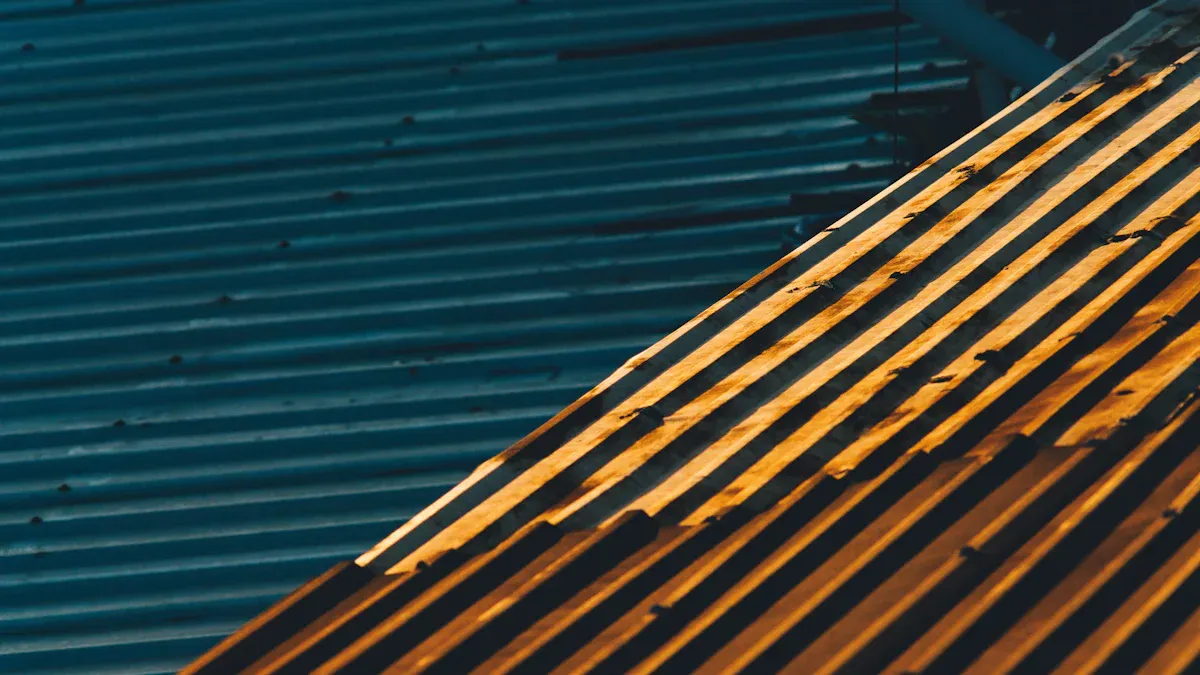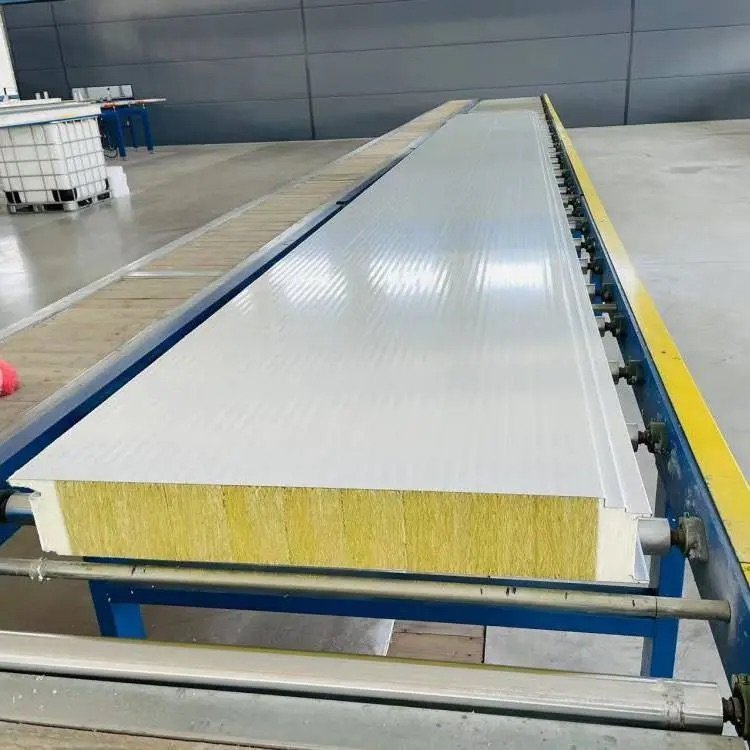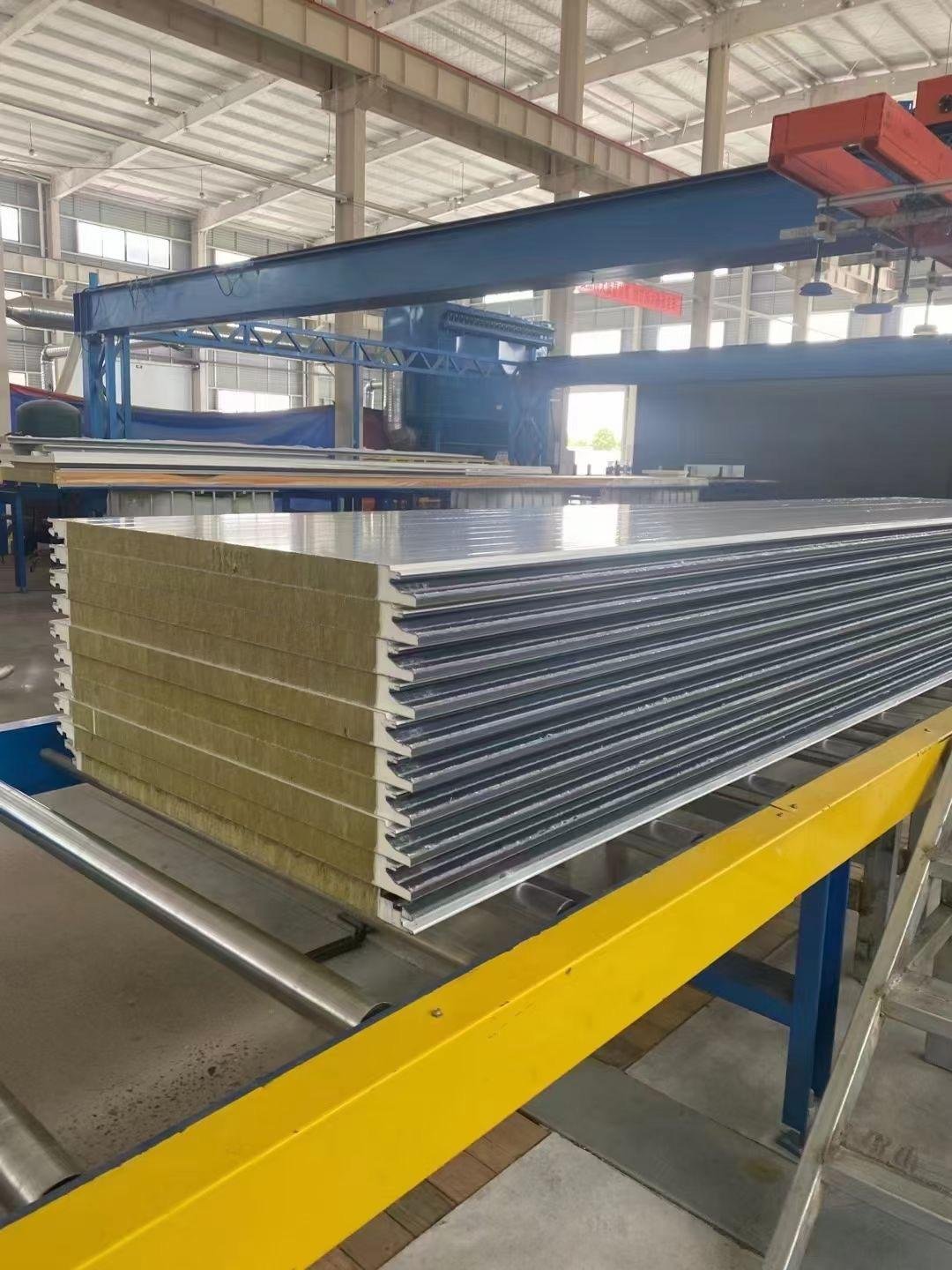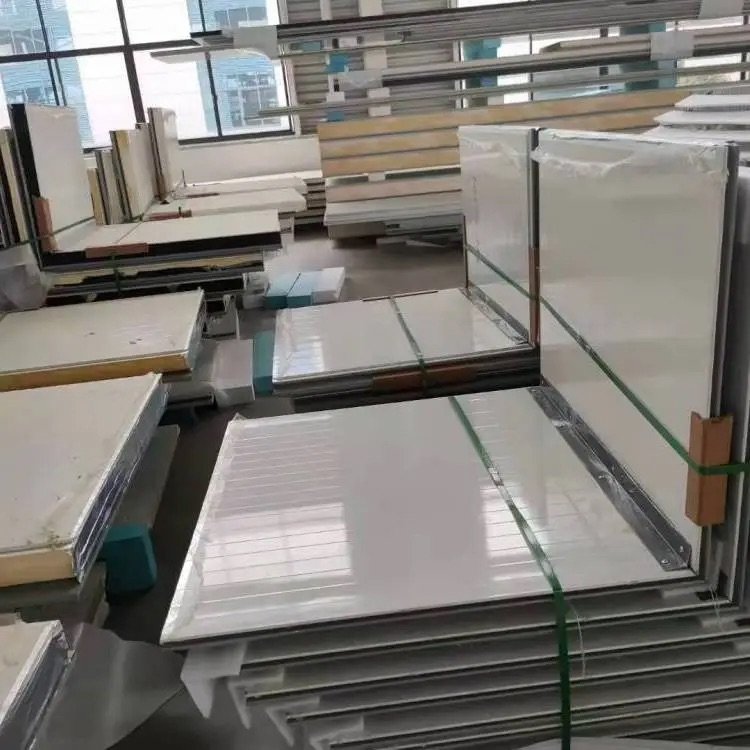
Comparing Production Methods for PU Panels
Explore the differences between continuous and discontinuous PU panel production.
Features | continuous PU Panel Production | Discontinuous PU Panel Production |
|---|---|---|
Production Speed | Fast, up to 12 meters/minute. | Slower, one panel at a time. |
Customization Ability | Limited to standard designs. | Highly customizable for unique shapes. |
Initial Investment | Higher setup costs for machinery. | Lower initial investment required. |
Production Volume | High volume, up to 1 million m²/year. | Lower volume, suited for small batches. |
Quality Consistency | Uniform quality across all panels. | Potential for slight variations. |
Higher energy use, around 350 kW. | Lower energy use, about 60 kW. | |
Flexibility in Design | Less flexible, focuses on efficiency. | More flexible, adapts to design changes. |
Market Applications | Ideal for large-scale industrial projects. | Best for custom and creative applications. |
Polyurethane (PU) panels are important in construction and insulation. There are two main ways to make these panels. One is continuous PU Panel Production, where panels are made nonstop on a conveyor. This method is very fast and efficient. The other is discontinuous production, where panels are made one by one in molds. This allows for more custom designs.
Choosing between these methods depends on factors like speed, cost, and use. Knowing the differences helps you pick the best option for your needs.
Key Takeaways
Continuous PU panel production is quick and works well for big projects needing many similar panels.
Discontinuous PU panel production lets you customize, making it great for special designs and smaller amounts.
Picking the right method depends on your project needs, money, and panel details.
Continuous production gives steady quality, while discontinuous production allows creative designs.
Knowing the pros and cons of each method helps you choose wisely for your building projects.
Understanding PU Panels
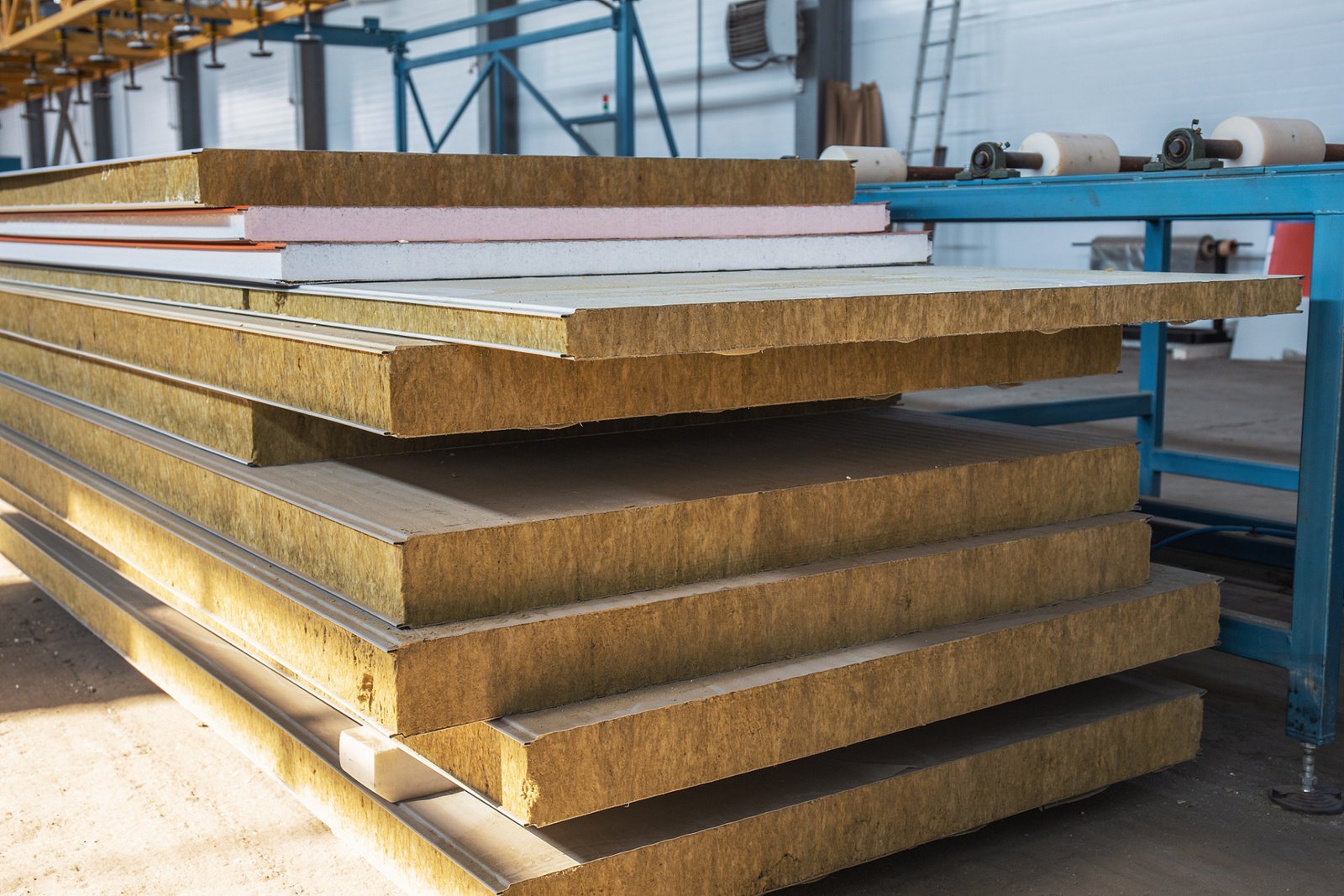
What Are PU Panels?
Polyurethane (PU) panels are materials used for insulation and building. They have a foam core made of rigid polyurethane. This core is placed between two strong outer layers. These layers are usually galvanized steel, aluminum, or stainless steel. This design makes the panels great for keeping heat in, blocking noise, and lasting a long time.
Specification | Value |
|---|---|
Panel Thickness | 40mm, 50mm, 75mm, 100mm |
Core Material Density | 40 kg/m³ |
Thermal Conductivity | 0.022 W/mK |
Acoustic Insulation | 30 dB |
Fire Resistance | Non-flammable |
PU panels are strong but not heavy. This makes them perfect for many building projects. They also resist water and fire, which helps them last longer in tough conditions.
Applications of PU Panels
PU panels are used in many industries because they are flexible and useful.
Residential Construction: They keep homes warm and save energy.
Commercial Buildings: These panels help with soundproofing and temperature control.
Industrial Manufacturing: Factories use them for cold storage and controlled environments.
Automotive Industry: PU panels make vehicles lighter, saving fuel.
Sustainable Construction: They are eco-friendly and meet green building goals.
The market for PU panels was worth USD 2.5 billion in 2023. It is expected to grow by 7.8% each year from 2024 to 2033 due to high demand.
Role of PU Panels in Construction and Insulation
PU panels are very important in today’s construction and insulation. They keep buildings warm or cool, saving energy and cutting carbon emissions.
Metric | Value |
|---|---|
Market Size (2020) | USD 11.17 billion |
Projected CAGR (2021-2028) | 5.5% |
Key Drivers | Green building standards, energy efficiency, cold chain infrastructure investments |
These panels also block noise, which is helpful in noisy cities. They are light, making them easy to install. Their fire-resistant feature adds safety. Whether for homes or offices, PU panels are a smart choice for eco-friendly and energy-saving buildings.
Continuous PU Panel Production

How Continuous Production Works
Continuous PU panel production uses machines to make panels nonstop. Raw materials like polyurethane foam and outer layers are added to a conveyor. These materials mix and form panels as they move along. The panels are then cut to size and checked for quality. This process is fast and great for making many panels quickly.
This method is very efficient. It can produce panels at 12 meters per minute. Manufacturers can make up to 1 million square meters of panels each year. These panels, with PUR or PIR cores, are excellent for keeping heat in. Many companies now use this automated process for better quality and to meet industry needs.
Advantages of Continuous Production
Continuous PU panel production has many benefits for big projects:
High Productivity: Machines make panels faster than manual methods.
Consistent Quality: Panels made this way are more uniform and reliable.
Cost-Effectiveness: Making many panels lowers the cost per piece.
Scalability: This method can handle growing production needs easily.
The market shows how useful this method is. By 2025, the market value will reach $18.43 billion. By 2034, revenue is expected to grow to $24.13 billion, with a 7.0% yearly growth rate.
Metric | Value |
|---|---|
Market Size Value in 2025 | $18.43 billion |
Revenue Forecast in 2034 | $24.13 billion |
Growth Rate | CAGR of 7.0% |
Limitations of Continuous Production
Continuous PU panel production is fast but not perfect for all projects. It works best for standard designs and large-scale production. Custom designs are harder to make with this method. Also, the machines needed for this process are expensive. Smaller manufacturers may find it hard to afford them.
Discontinuous PU Panel Production
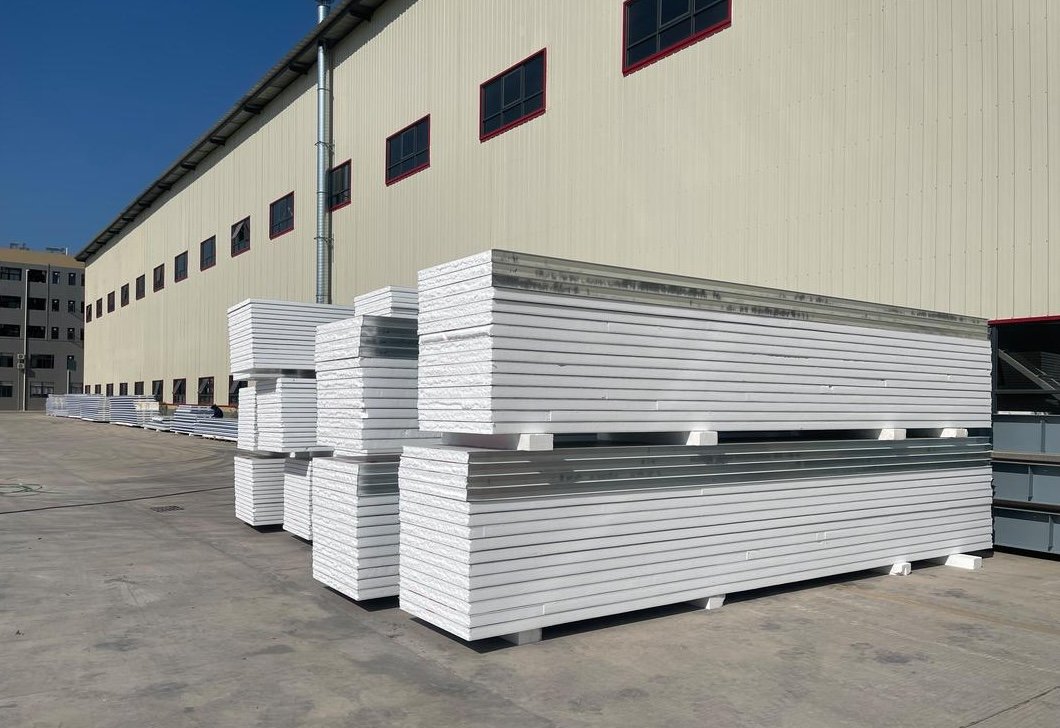
How Discontinuous Production Works
Discontinuous PU panel production makes one panel at a time. First, outer layers like steel or aluminum are placed in a mold. Next, polyurethane foam is injected into the mold. The foam expands to fill the space between the layers. Once it hardens, the panel is taken out and checked for quality.
This method is great for making panels with special shapes or designs. It is best for smaller orders or custom projects. Unlike continuous production, this process gives more control over each panel’s details.
Advantages of Discontinuous Production
Discontinuous production has many benefits for flexible projects:
Customization: Panels can have unique sizes, shapes, or finishes. This is perfect for special architectural needs.
Lower Initial Investment: The machines cost less than those for continuous production. This is helpful for smaller manufacturers.
Versatility: You can easily switch between different panel designs or types.
Tip: For small batches or custom designs, discontinuous production is a smart choice.
Limitations of Discontinuous Production
Discontinuous production is flexible but slower. Each panel takes time to make, limiting daily output. This method may not work well for large projects needing many panels. Keeping all panels consistent can also be tricky.
Note: Discontinuous production is great for custom work but lacks the speed and efficiency of continuous production for big projects.
Comparing Continuous and Discontinuous PU Panel Production

Productivity and Efficiency
Continuous production is faster for making PU panels. Machines can produce panels at 8 meters per minute. This method can create up to 528 square meters of panels every hour. Discontinuous production is slower, making only 36 square meters per hour. It works better for small projects or custom designs.
Energy use is also different. Continuous production uses more power, about 350 kilowatts. Discontinuous production needs less power, around 60 kilowatts. For high output, continuous production is the best option.
Metric | Continuous Series | Discontinuous Series |
|---|---|---|
Speed (m/min) | 0-8 | N/A |
Capacity (m²/h) | 0-528 | 0-36 |
Total Power (kw) | 350 | 60 |
Weight (t) | 230 | 25 |
Quality and Consistency
Continuous production makes panels with the same quality every time. Machines ensure all panels have the same thickness and finish. This is important for big projects needing uniform panels. Discontinuous production allows for custom designs but may have small differences between panels. These differences happen because of manual work or mold use.
If you need exact and uniform panels, choose continuous production. For special designs or finishes, discontinuous production is better.
Cost and Investment
Setting up costs are higher for continuous production. The machines are bigger and weigh up to 230 tons. Discontinuous production machines are smaller, weighing about 25 tons, and cost less to install.
Continuous production is expensive at first but saves money for large projects. Discontinuous production is cheaper to start and good for small or custom jobs. Your choice depends on your budget and project needs.
Application Flexibility
Continuous and discontinuous PU panel production have different uses. Each method has its own benefits based on project needs.
Continuous production is great for making many panels quickly. It works best for projects needing standard-sized panels. Industries like cold storage and big factories use this method. The automated process ensures all panels look the same. This makes it perfect for projects needing speed and accuracy.
Discontinuous production is better for custom designs. It lets you make panels in special shapes, sizes, or colors. Architects and designers like this method for creative projects. For example, if you need panels with unique patterns, this method works well.
Market trends show these differences. Continuous production is used for large-scale projects. Discontinuous production is popular for small, custom orders. This makes it a good choice for special industries and niche markets.
Feature | Continuous Production | Discontinuous Production |
|---|---|---|
Best For | Large projects, standard panels | Custom, small-scale designs |
Flexibility | Limited to standard sizes | High, supports unique designs |
Common Applications | Factories, warehouses, big buildings | Custom homes, creative designs |
Pick the method that fits your project. If you need speed and uniformity, go with continuous production. For unique designs or small batches, choose discontinuous production. Knowing these options helps you decide what’s best for your project.
Knowing how continuous and discontinuous PU panel production differ helps you decide. Continuous production is fast and consistent, perfect for big projects like factories. Discontinuous production is flexible and customizable, great for smaller creative jobs.
The market wants thinner panels (under 51 mm) for building walls. This shows the need for specific production methods. For industries needing many panels, continuous production works best. For special designs or small markets, discontinuous production is more versatile. Pick based on your project’s size and design needs.
FAQ
1. Which method is faster for producing PU panels?
Continuous production is much quicker. It can make 528 square meters of panels every hour. Discontinuous production is slower, producing only 36 square meters per hour. If you need speed, continuous production is the best option.
2. Which method is better for custom designs?
Discontinuous production is best for custom designs. It lets you create panels with special shapes, sizes, or finishes. Continuous production focuses on standard panels, so it’s not ideal for unique projects.
Tip: Use discontinuous production for creative or unique designs.
3. Which method costs more to set up?
Continuous production costs more to start. The machines are bigger and more expensive. Discontinuous production is cheaper to set up, making it better for smaller businesses or limited budgets.
4. Can both methods produce high-quality panels?
Yes, both methods make high-quality panels. Continuous production ensures all panels are the same. Discontinuous production allows flexibility but may have small differences. Choose based on whether you need uniformity or custom designs.
5. Which industries benefit most from each method?
Continuous production is great for industries like cold storage and large buildings. Discontinuous production works well for custom homes or creative projects. Pick the method that fits your industry’s needs.
Note: Knowing your project’s needs helps you choose the right method.

